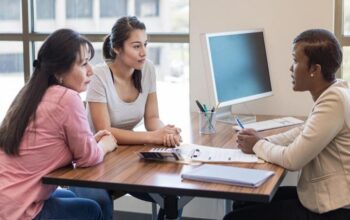In today’s digital age, investing in the stock market has become more accessible than ever. However, many new investors are often caught off guard by the various fees and charges that can eat into their returns. While brokerage fees are the most obvious cost, there are a number of “hidden” charges that can accumulate over time. This is where a Demat account and a smart tool like a brokerage calculator become your best allies. This article will guide you through the essentials of opening a Demat account and how to use a brokerage calculator to keep your trading costs in check.
What is a Demat Account?
A Demat account, short for “dematerialized account,” is a digital locker for your shares and other securities. Instead of physical share certificates, a Demat account holds your investments in an electronic format. It is an essential prerequisite for trading in the stock market today, as per SEBI regulations. A Demat account is opened with a Depository Participant (DP), which can be a bank or a stockbroker.
Key features of a Demat account:
- Electronic Holding: Eliminates the risk of losing or damaging physical share certificates.
- Convenience: Allows for seamless and quick buying and selling of securities.
- Portfolio Management: Provides a consolidated view of all your investments, from stocks to mutual funds and ETFs.
- Nomination Facility: Offers a nomination facility to secure the future of your investments.
To open a Demat account, you will typically need to provide your PAN card, Aadhaar card, a canceled cheque, and a photograph. The process is now largely paperless and can be completed online in a few simple steps.
Unveiling Hidden Trading Costs
While a broker’s advertised brokerage fee is the most visible cost, it is just one piece of the puzzle. There are several other statutory and non-statutory charges that impact your net profit. These include:
- Securities Transaction Tax (STT): A tax levied by the government on every security transaction. The rate varies for delivery and intraday trades.
- Transaction Charges: Fees charged by stock exchanges like NSE and BSE for using their trading platform.
- Goods and Services Tax (GST): An 18% tax applied to brokerage fees and transaction charges.
- Stamp Duty: A state-level tax on every transaction, applicable on the buy side of the trade.
- SEBI Turnover Fees: A small fee charged by the Securities and Exchange Board of India (SEBI) for regulating the markets.
- Demat Account Charges: While many brokers offer zero account opening fees, there are often annual maintenance charges (AMC) and charges for debiting shares from your account (DP charges).
These charges, when combined, can significantly reduce your profit margins, especially for frequent traders.
How a Brokerage Calculator Becomes Your Best Friend
A brokerage calculator is a free online tool that provides a detailed breakdown of all the costs associated with a trade before you even execute it. By simply inputting a few details like the buy price, sell price, quantity, and the type of trade (intraday or delivery), you can get a clear picture of your total expenses.
How it helps you save money:
-
Cost Transparency: It provides a comprehensive breakdown of all charges, including hidden ones like STT, GST, and transaction fees. This transparency helps you understand the true cost of your trade and prevents any surprises.
-
Profitability Analysis: The calculator shows your net profit after all deductions, allowing you to determine the break-even point and assess whether a trade is economically viable.
-
Broker Comparison: You can use different brokerage calculators to compare the total costs of executing the same trade with different brokers. This is crucial for choosing a broker with a fee structure that aligns with your trading style and volume. For instance, a flat-fee broker might be more cost-effective for large transactions, while a percentage-based broker might be better for smaller ones.
-
Strategic Optimization: It helps you analyze the impact of different trading strategies. For example, you can see if making multiple small trades is more or less expensive than making one large trade, helping you optimize your approac
Conclusion
The journey to financial growth begins with a single step, and for modern investors, that step is to open Demat account. It is the gateway to a secure, efficient, and transparent investing experience. By understanding the simple process and appreciating its numerous benefits, you can confidently take control of your financial future.



